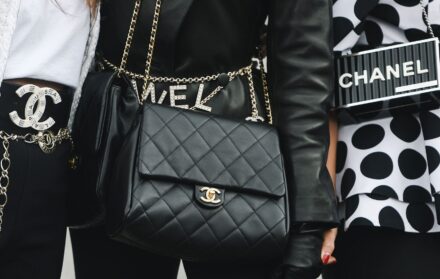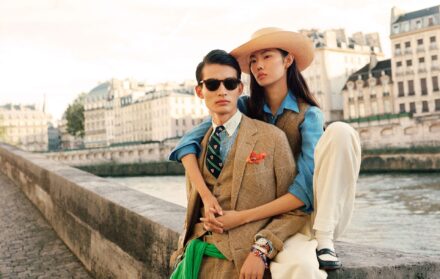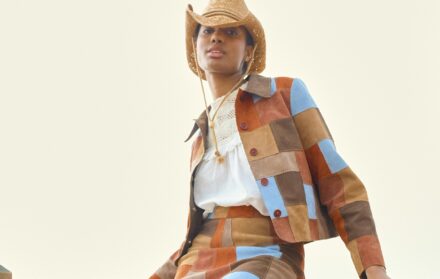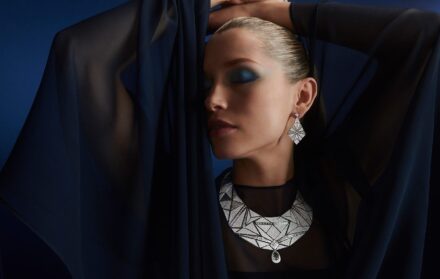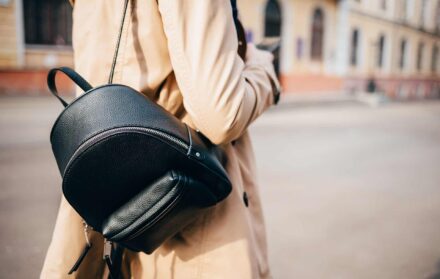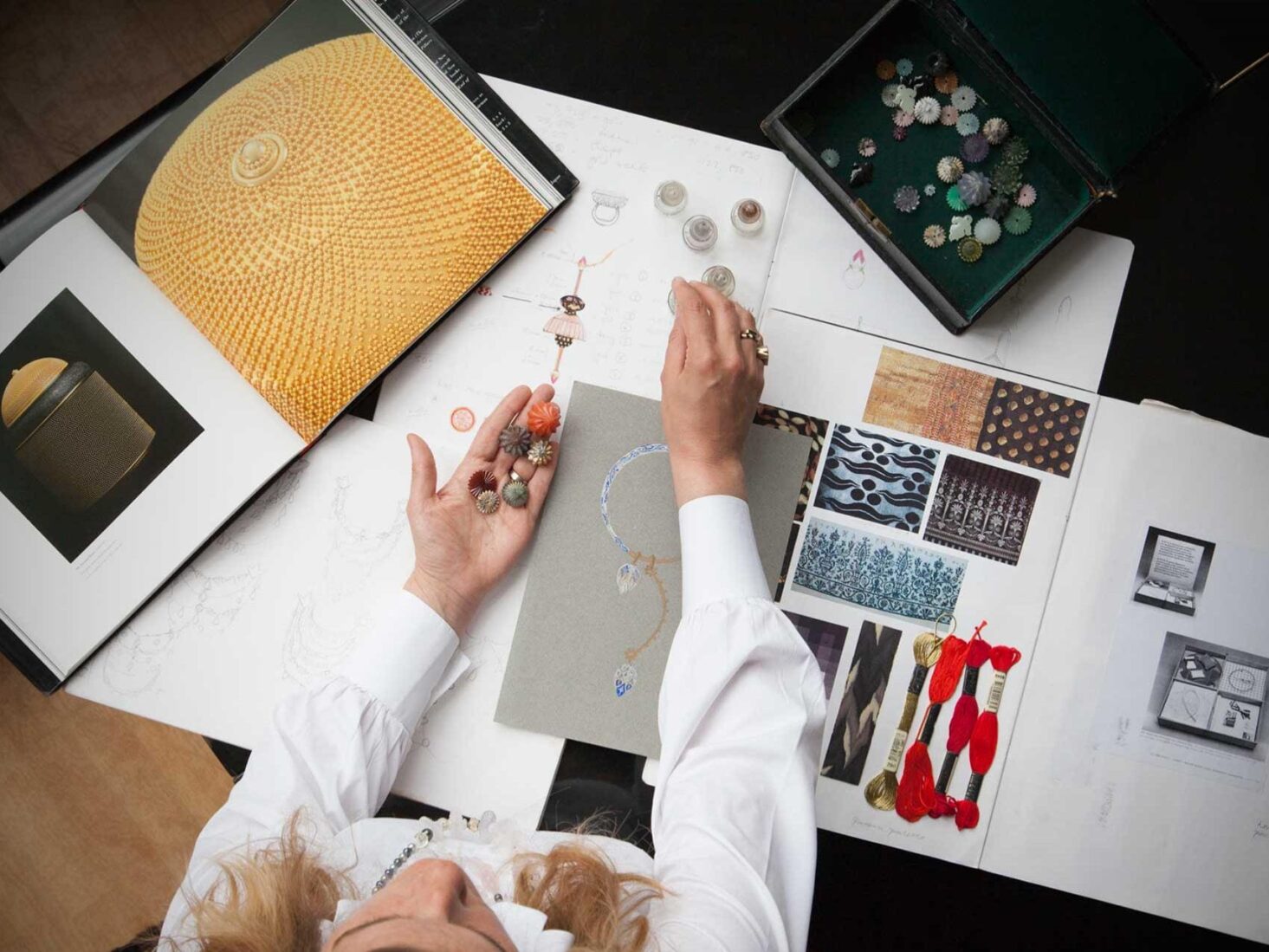
Alice Cicolini on Translating the Silk Route into Precious Stones
“I feel like my small contribution to that can be the recognition that sustainability is not just about materials and technology, it’s also about skills"
“I always loved jewellery,” says Alice Cicolini, as we sip coffee beside the Hertford Union Canal on a sunny morning in east London. “My mother’s engagement ring was the trigger. It was a silver piece with a malachite stone, created by Phillip & Angela Lowery [a venerated British jewellery studio of the 1960s and 70s]. It was so striking and seemed so much larger to me as a child. It became almost synonymous with her and I adored it.”
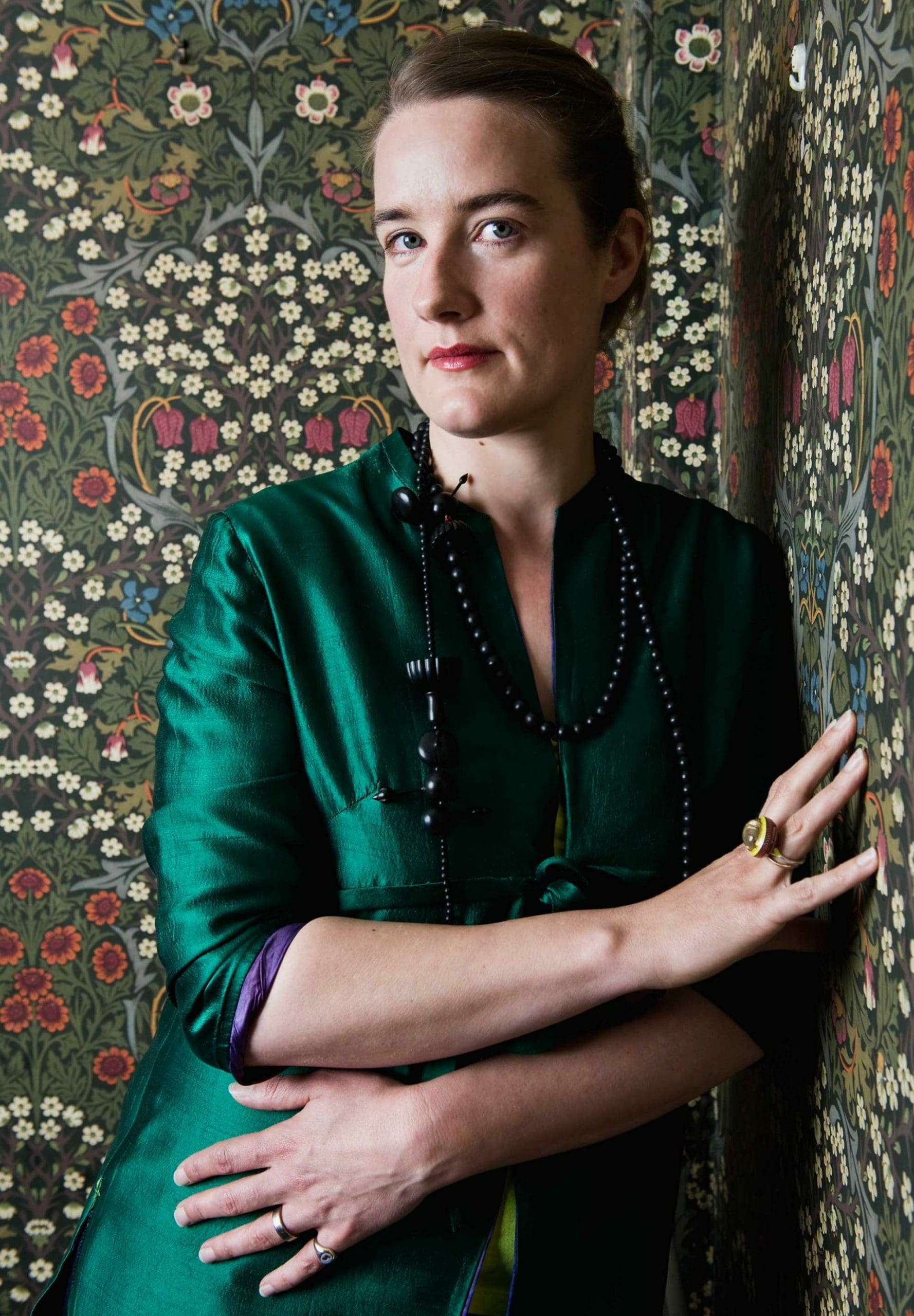
Cicolini was born in London to parents of the wartime generation. Her mother was an academic and a lover of art who encouraged all cultural pursuits and immersed her daughter in an abundance of books and experiential gardening. Surrounded by her own impressive book collection – gardening opportunities are limited these days at her canal-side apartment – Cicolini now lives just a few miles down the road in Hackney, with her husband of 20 years and their two children. Like her mother before her, she encourages her children to soak up all the creativity that London has to offer – it’s what made Cicolini, and she’s hoping that in time, it will make them, too.
An only child, Cicolini was brought up in an imposing Victorian semi, lined with eclectic William Morris wallpapers. Here, ‘mend and make do’ was the mantra; dolls’ clothes were fashioned from old material scraps, their houses constructed from discarded cardboard covered with wallpaper off-cuts. “I knew from an early age that I wanted to create something. I just wasn’t sure exactly what,” she muses. “I decided on a film and drama degree once I’d left school. But when we studied costume design as part of the course, I realised that my heart was in hands-on design, not drama.”
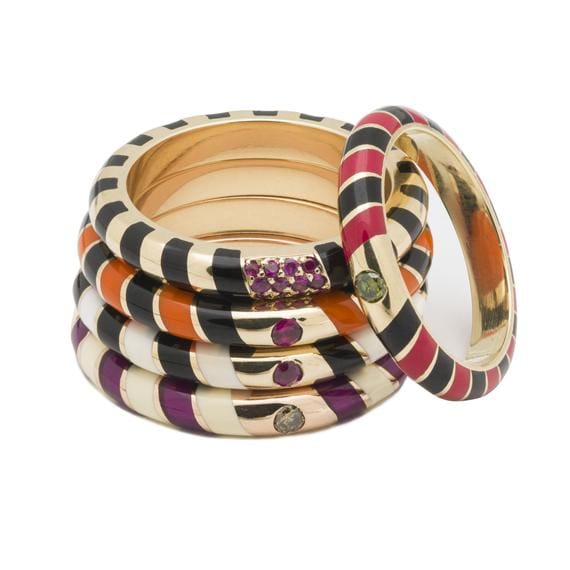
After university, Cicolini spent her formative years working in London for designers such as Tom Dixon and Orla Kiely. She also began curating design exhibitions, and wrote a book, The New English Dandy, an aesthetically pleasing account of men’s style. A job as director of arts and culture for the British Council in India followed and she swapped north London for New Delhi.
Here, her childhood passion for jewellery was reignited by a visit to the Mehrangarh Fort Museum in Jodhpur. “I can remember the light-bulb moment,” she recalls. “I found the most beautiful jewellery box on display there. I was captivated by its beauty but also the story it had to tell. The inscription explained that it had been used as part of the Solah Shringar, an adornment ritual of 16 stages, which includes literal objects (rings, bracelets, necklaces), but also layers of sensory experience – scent, sound, tactility. It was powerfully evocative and for the first time my mind started thinking in jewellery.”
Feeling inspired and missing home, Cicolini returned to London in 2009, immediately enrolling on a master’s course in jewellery design at Central St Martins. Under the expert guidance of course director Simon Fraser, now friend and mentor, she began bringing her ideas to life. She launched her first collection at a Central St Martins show in 2009 and sold her first piece direct from the stand that same day to Peter Ting, creative director at Asprey – a good omen.
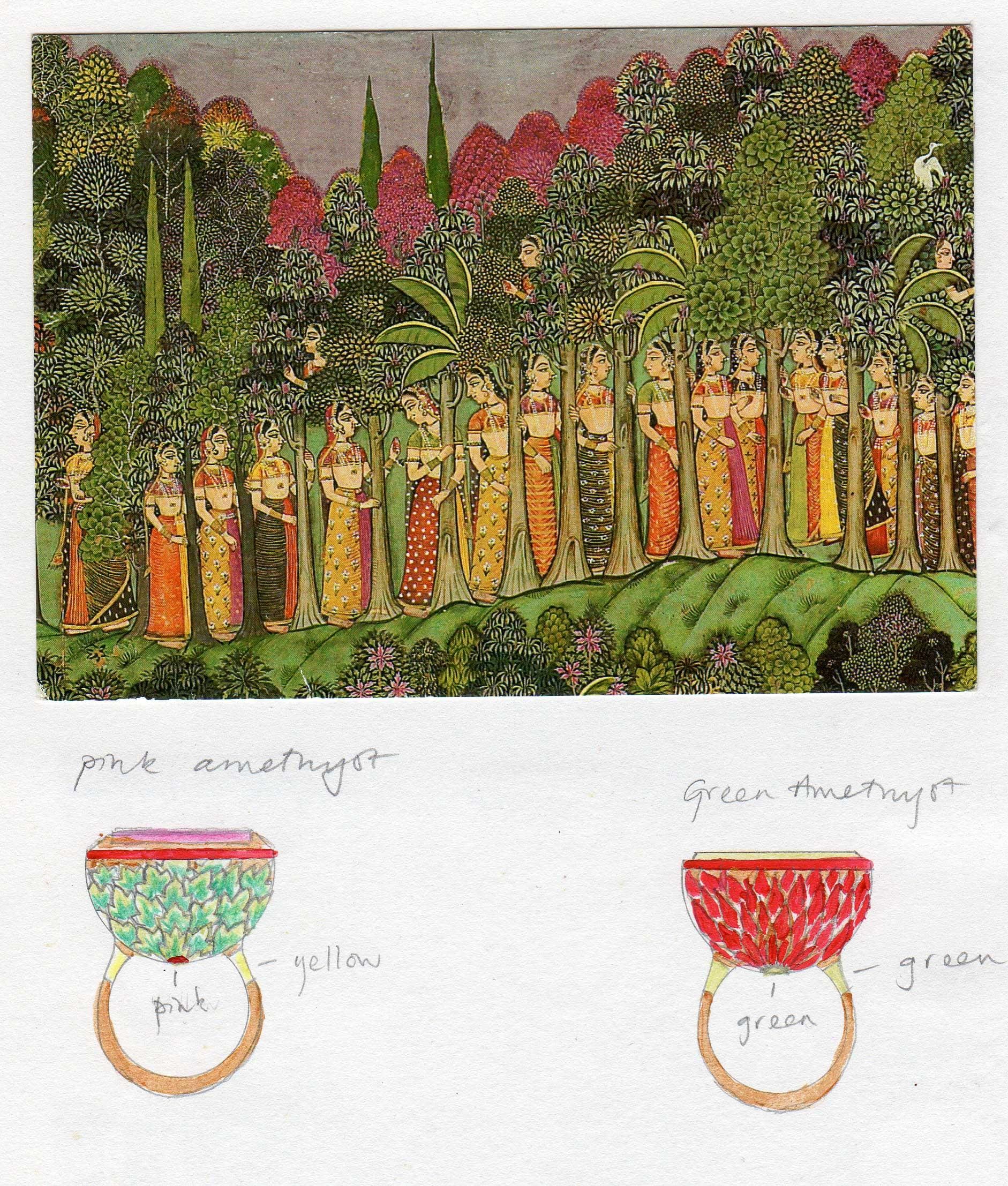
Nine years on, Cicolini’s India-inspired designs still have their origins among the sacred architecture and patterns of the Silk Route. The enamelled pieces for which she is best known are each hand-finished in India, where she collaborates with the studio of one of the last Jaipuri meenakari trained in the enamel traditions of Persia. This ancient artisanal skill, passed down through family generations over 200 years, combines ground, pigmented glass and metal, heated and fired into the recesses created by the engraving and then polished with agate stone to create extraordinarily vivid and rich colours. This artisanal element lies at the heart of everything she does.
“My jewellery is about collaboration and juxtaposition, about craftsmanship and heritage – oh, and colour. I love colour. But I also want people to buy into the amazing stories behind the designs, behind the people who made them, behind the techniques and heritage of the craftsmanship – then add their own stories to the gems as they become part of their lives.”
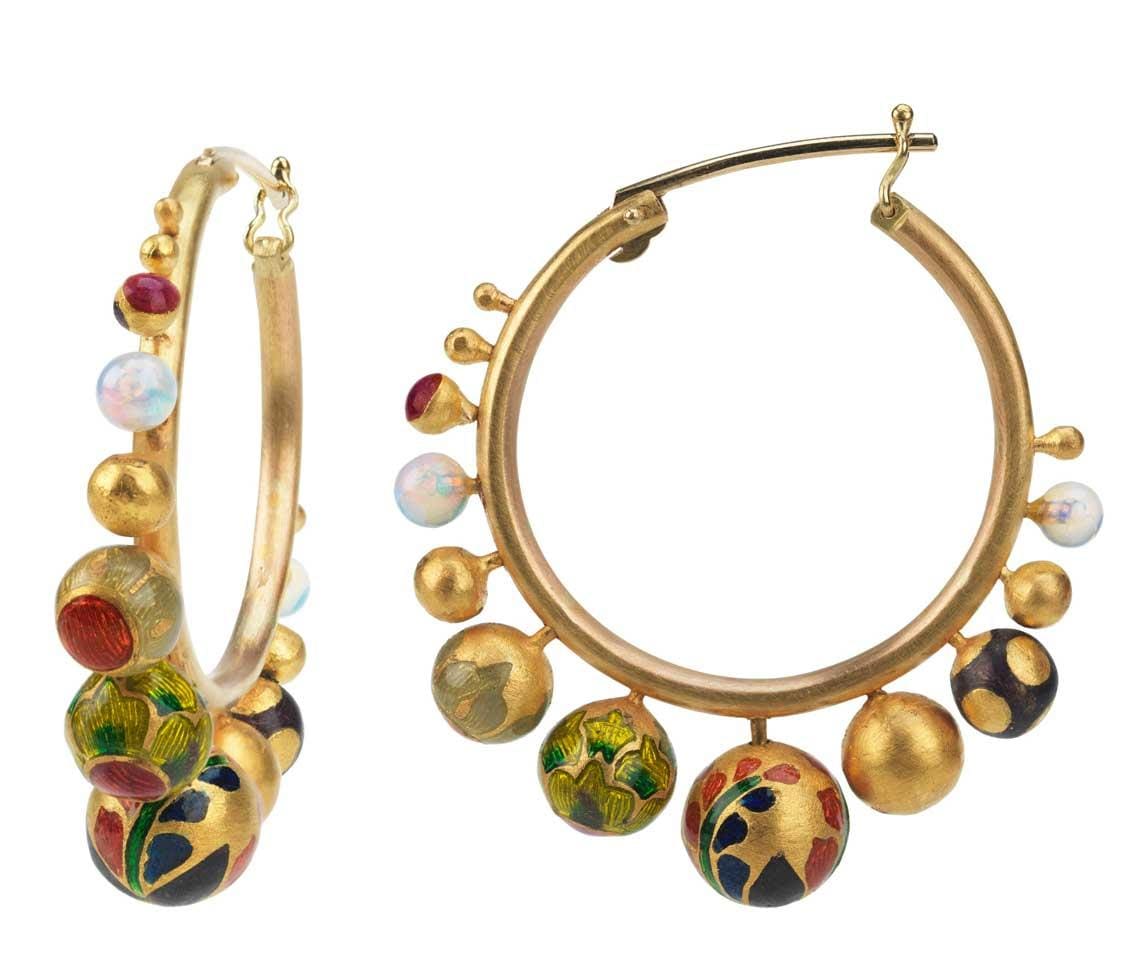
Demand for Cicolini’s kaleidoscopic fusion of precious metals, gemstones and intricate enamelling has grown organically – primarily by word of mouth and via the magazine jewellery editors who have understandably fallen head over heels for her pieces. Her pieces regularly feature on the pages of Vogue, Harper’s Bazaar, Tatler, Vanity Fair and the New York Times. She has also exhibited at the V&A, Fortnum & Mason, the Zaha Hadid Gallery, Somerset House, Sotheby’s and Asia House in London, and was part of the British Fashion Council’s celebrated Rock Vaults initiative, curated by Stephen Webster, from 2012 to 2015.
Back in Hackney, I’m also falling for her newest collection. It’s the pure vivaciousness of the work that’s so mesmerising. A range for shrinking violets it is not. Each piece makes its own standout statement and the eye cannot help but be drawn to all that painstakingly glorious detail. Each ring, pendant and earring has a future heirloom feel to it.
It is this bravura that most appeals to the people who wait weeks for their own bespoke pieces. “My clients are more often than not people who work in some kind of creative industry themselves,” says Cicolini. “They are not shopping for outsider approval or out to grab a status piece, so they don’t mind that some gemstones I use might only be visible to the wearer. In this way, my work challenges the common perception of value. A person dedicating their life to developing an extraordinary skill is the kind of devotion that we should be prepared to respect and to pay for. The real value of my work is the 30 years of training the craftsman has had, or the colours or scale.”
Cicolini adds that most of her buyers are women buying for themselves. “It’s extremely rare that I get a commission from a man who hasn’t discussed it with a female first. Women tend to be the ones who refer their male friends and relatives to me.”
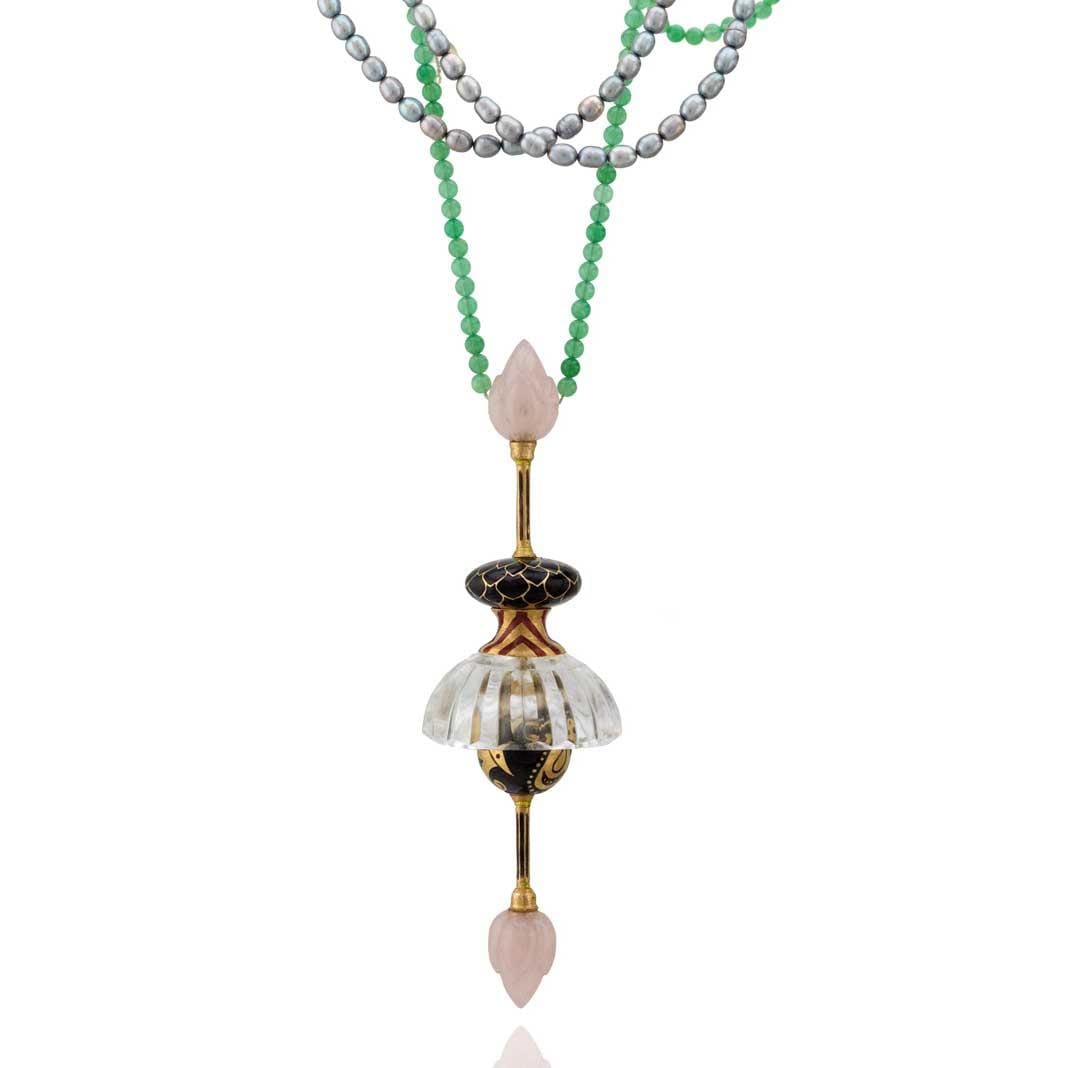
As I lose Cicolini to a long distance FaceTime with one of her enamellists, I wonder whether Brexit concerns her. When she’s off the line, I ask. “Well,” she says, “Tamara Cincik, CEO and founder of Fashion Roundtable, has produced research that suggests the fashion industry is likely to feel a significant impact from Brexit, approximately 40 per cent of the £29.7 billion that this sector generates annually for the UK, and of course this is deeply troubling. At the same time, the children of great craftsmen are turning away from traditional skills to seek work in the city, and whole swathes of practice are being lost – it only takes two generations for a whole craft technique to be lost entirely. I do believe, though, that we are in a significant moment of change, and whilst some of it might be deeply divisive, there is also great space for positive steps forward.” She cites “amazing women” such as Caryn Franklin, fashion commentator and professor of diversity in fashion at Kingston University, Grace Woodward, stylist and television presenter, and Julietta Dexter, CEO of PR company The Communications Store, noting that they are all “really pushing for positive change – recognition of women in the workplace, of diversity in the creative industries, and body positivity.”
Cicolini herself is similarly committed to positive change. “I feel like my small contribution to that can be the recognition that sustainability is not just about materials and technology, it’s also about skills,” she says. “If we don’t treasure our cultural and material traditions then we lose much more than just a jewel.”

alicecicolini.com




